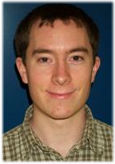 Alumni
Alumni
MSc 2000
Supervisor
Dr Andrew Trites
Thesis
Growth and bioenergetic models for Steller sea lions (Eumetopias jubatus) in Alaska.
The primary goal of my study was to develop a bioenergetic model to predict the food requirements of Steller sea lions (Eumetopias jubatus). An important component of the bioenergetic model was a physical growth model. Growth models were constructed using morphometric measurements of males (≥ 1 year old), females (≥ 1 year old), and pregnant females with a foetus that had been shot on rookeries, haulouts, and in the coastal waters of southeastern Alaska, the Gulf of Alaska and along the Bering Sea ice edge between 1976 and 1989. A Richards model best described age related growth in body length and mass. Males grew (in length) over a longer period than females and exhibited a growth spurt in mass which coincided with sexual maturity. Sexual dimorphism in both body length and mass was significant by 3 years of age. The average predicted standard lengths of males and females older than 12 years were 3.04 m and 2.32 m respectively, while the average predicted weights were 681 kg and 273 kg respectively. Residuals of the size at age models indicated seasonal changes in growth rates. Young animals (<6 years old) and adult males grew little during the breeding season (May – July), and adult males did not resume growth until sometime after November.
The bioenergetic model was used to estimate the food requirements of the Alaskan Steller sea lion population in the 1990’s and to examine how these food requirements varied seasonally and spatially. Input included age/sex-specific energy requirements, population size/composition, and diet composition/energy content by date and region of Alaska. Error in model predictions was calculated using uncertainty in parameter values and Monte Carlo simulation methods. Food requirements were generally lowest in the summer and highest in the winter and spring mainly due to changes in activity budgets and the energy content of the diet. The mean daily food requirement of pregnant females was only marginally greater than the mean daily food requirement of non-pregnant females of the same age, but the mean daily food requirement of females nursing pups was about 70% greater than females of the same age without pups. Per capita population food requirements differed by up to 12% among regions of Alaska due to differences in the energy content of the diet. Steller sea lion predation was small relative to total walleye pollock natural mortality, but accounted for a large part of total Atka mackerel natural mortality. Of the bioenergetic, population, and diet parameters, uncertainty in bioenergetic parameters resulted in the largest error in model predictions. The model provided both a quantitative estimate of the Alaskan Steller sea lion population’s food requirements and direction for future research.
Publications
Growth and bioenergetic models for Steller sea lions (Eumetopias jubatus) in Alaska. Winship, A.J. 2000. Masters thesis, University of British Columbia, Vancouver BC. 160 pages (PDF)
Interacting physiological constraints to foraging behavior in marine mammals. Rosen, D. A. S., A. J. Winship and L. A. Hoopes. 2006. (PDF)
Bottom-up forcing and the decline of Steller sea lions (Eumetopias jubatus) in Alaska: assessing the ocean climate hypothesis. Trites, A. W., A. J. Miller, H. D. G. Maschner, M. A. Alexander, S. J. Bograd, J. A. Calder, A. Capotondi, K. O. Coyle, E. D. Lorenzo, B. P. Finney, E. J. Gregr, C. E. Grosch, S. R. Hare, G. L. Hunt, J. Jahncke, N. B. Kachel, H.-J. Kim, C. Ladd, N. J. Mantua, C. Marzban, W. Maslowski, R. Mendelssohn, D. J. Neilson, S. R. Okkonen, J. E. Overland, K. L. Reedy-Maschner, T. C. Royer, F. B. Schwing, J. X. L. Wang and A. J. Winship. 2007. Fisheries Oceanography 16:46-67. (PDF)
Diets of Steller sea lions (Eumetopias jubatus) in Southeast Alaska from 1993-1999. Trites, A.W., D.G Calkins and A.J. Winship. 2007. Fishery Bulletin 105:234-248. (PDF)
Potential effects of short-term prey changes on sea lion physiology. Rosen, D.A., D.J. Tollit, A.J. Winship, and A.W. Trites. 2006. In A.W. Trites, S. Atkinson, D.P. DeMaster, L.W. Fritz, T.S. Gelatt, L.D. Rea and K. Wynne (eds), Sea Lions of the World. Alaska Sea Grant College Program, University of Alaska, Fairbanks. pp. 103-116. (PDF)
Food consumption by sea lions: existing data and techniques. Winship, A.J., A.M.J. Hunter, D.A.S. Rosen, and A.W. Trites. 2006. In A.W. Trites, S. Atkinson, D.P. DeMaster, L.W. Fritz, T.S. Gelatt, L.D. Rea and K. Wynne (eds), Sea Lions of the World. Alaska Sea Grant College Program, University of Alaska, Fairbanks. pp. 177-191. (PDF)
Risk of extirpation of Steller sea lions in the Gulf of Alaska and Aleutian Islands: a population viability analysis based on alternative hypotheses for why sea lions declined in western Alaska. Winship, A.J., and A.W. Trites. 2006. (PDF)
Quantifying errors associated with using prey skeletal structures from fecal samples to determine the diet of the Steller sea lion (Eumetopias jubatus). Tollit, D.J., M. Wong, A.J. Winship, D.A.S. Rosen and A.W. Trites. 2003. Marine Mammal Science pp. 724-744. (PDF)
Prey consumption of Steller sea lions (Eumetopias jubatus) off Alaska: how much prey do they require? Winship, A.J. and A.W. Trites. 2003. Fishery Bulletin 101:147-163. (PDF)
A bioenergetic model for estimating the food requirements of Steller sea lions (Eumetopias jubatus) in Alaska. Winship, A.J., A.W. Trites and D.A.S. Rosen. 2002. (PDF)
Growth in body size of the Steller sea lion. Winship, A.J., A.W. Trites and D.G. Calkins. 2001. (PDF)
